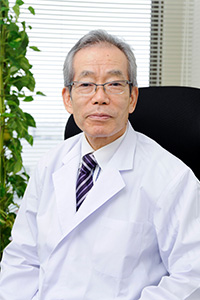Atopic dermatitis and skincare
What is atopic dermatitis?
Atopic dermatitis is an inflammatory skin disease that develops from a combination of factors—the most important of which are genetic predisposition, immune system dysfunction, problems with the skin barrier function, and environmental exposure. Atopic dermatitis tends to co-occur with asthma and allergic rhinitis (seasonal allergies) in the individual or family. It is accompanied by eczematous lesions caused by itching and irritation and commonly appears during childhood. The patient’s condition tends to alternately improve and worsen, with specific cutaneous conditions appearing at different times of life 1 2 3.
These specific skin symptoms are classified into three periods: infant (age 2 and younger), childhood (age 2–12), and teen/adult (age 13 and older). Infants primarily experience redness and papules (raised rashes) on the forehead, cheeks, and other areas of the head, oozing due to scratching, and frequent scabbing. Children secrete less sebum, so their skin tends to become dry, with redness most commonly appearing inside the elbow and knee joints. Due to ongoing inflammation in these areas, the skin here tends to become thick, leathery, and scarred from the abrasions. The arms and legs can also develop nodules (raised bumps) from repeated scratching. In adults, atopic dermatitis usually spreads to the face and neck as well as the surrounding area and the limbs, while lichenification (development of thick, leathery patches) increases. Because the flare-ups have recurred over many years at this point, the person can experience loss of pigmentation as well as loss of hair on the scalp and eyebrows. The loss of the outer third of the eyebrows is known as the Sign of Hertoghe 4.
In terms of prevalence, 10–15% of people are expected to get the disease before age 20 or so. Most experience milder symptoms after age 40.
Atopic dermatitis is characterized by itching, which tends to worsen when the humidity of the skin rises, such as during bathing or exercise. Sweating exacerbates the itching. Itching can also worsen overnight as the body heats up during sleep, and many patients have trouble sleeping as a result. The itching can also make it difficult to focus during daily tasks, which negatively affects quality of life 5.
Among the objective indicators used to measure the severity of atopic dermatitis, the most convenient are the severity classifications issued by the Japanese Society of Allergology. Under these guidelines, mild atopic dermatitis is defined as the observance of only mild rashes, moderate as rashes with severe inflammation on less than 10% of the body surface area, and severe as rashes with severe inflammation on 10–30% of the body surface area. Patients with severely inflamed rashes on more than 30% of the body surface area are classified as "most severe" 6. Globally, the Severity Scoring of Atopic Dermatitis (SCORAD) and Eczema Area and Severity Index (EASI) are the most commonly used scales for evaluation of the treatment effects. They include numerical scales for measuring rash surface area and severity 7 8. Popular clinical tests used to check severity include tracking serum immunoglobulin E (IgE) levels or thymus and activation-regulated chemokine (TARC) values to reflect of symptom status over short periods time 9.
Severe cases of atopic dermatitis can be accompanied by ophthalmological disorders (such as cataracts and detached retina) as well.

Dr. Masamitsu Ichihashi
Professor Emeritus, Kobe University
Dr. Ichihashi completed his doctoral program at the Kobe University Graduate School of Medicine. He specializes in dermatology, with a particular interest in researching how UV rays affect the skin over many years of exposure. He has also trained outside of Japan in dermatology and dermatological treatments.
